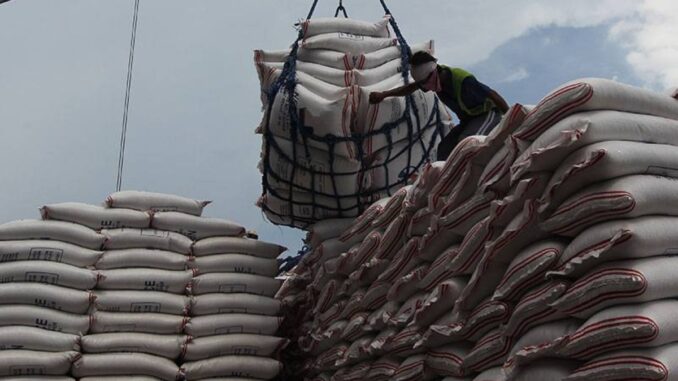
THE Philippines has been importing rice at such a high volume that will most likely exceed that of the whole of 2023.
Data from the Department of Agriculture-Bureau of Plant Industry (DA-BPI) showed rice shipments as of October 17 totaled 3.58 million metric tons (MT), close to surpassing the 3.61 million MT total last year.
The figures are even higher than the 2.84 million MT record from January to October 2023.
In contrast, the 3.6 million MT imports in 2023 were 5.9 percent lower than the 3.82 million MT in 2022.
From October 1 to 17, 2024, rice shipments reached 294,113 MT, while those of July totaled 398,113 MT. Average monthly rice imports since August were over 300,000 MT.
Furthermore, 925,013 MT of rice arrived in the last quarter of 2023, with the bulk at 510,901 MT shipped in December.
“Any additional buffer rice stocks to prepare for the risk of La Niña later in 2024 would also lead to increased rice imports,” Rizal Commercial Banking Corp. (RCBC) chief economist Michael Ricafort said, adding that the lower tariff rates on imported rice, as well as reduced world rice prices — which are at their lowest in the past two-and-a-half months — could likewise reduce local rice prices.
Vietnam remained the top rice exporter to the Philippines during the period with over 2.84 million MT or 79 percent of total imports.
Next is Thailand with 448,963 MT; Pakistan, 159,159 MT; and Myanmar, 107,198 MT.
The remaining shipments came from India, China, Japan, Cambodia, Italy and Spain.
In its monthly report, the United States Department of Agriculture (USDA) in Manila projected the Philippines’ rice import volume to reach 4.7 million MT for 2024 — even as Agriculture Secretary Francisco Tiu Laurel Jr. earlier said otherwise.
In any case, the Philippines still ranks as the world’s top rice importer.
Vietnam follows with an estimated 2.9 million MT, and the European Union, 2.2 million MT.


Be the first to comment